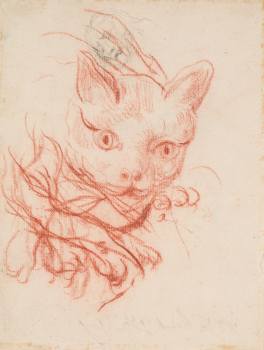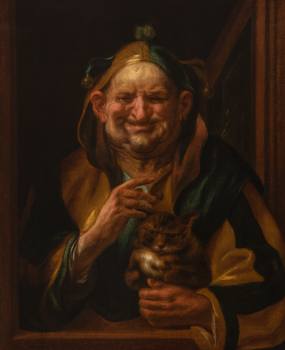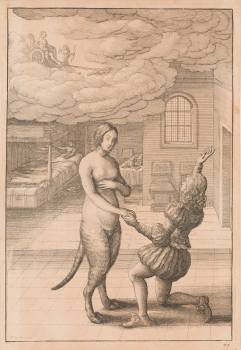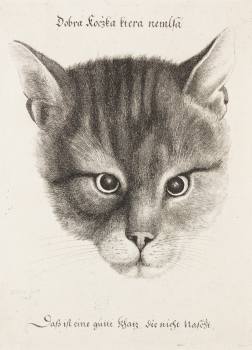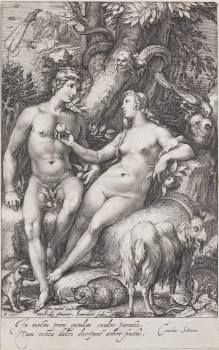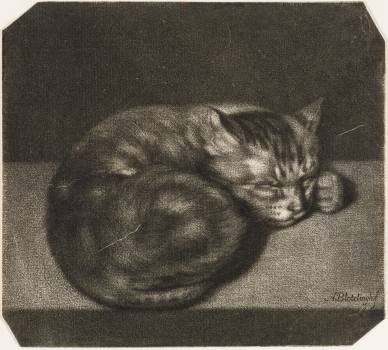The etching Head of a Cat (known in Czech as A Good
Cat is not Greedy) from 1646 stands out as one the best known and most
cryptic works by Wenceslaus Hollar; we could refer to it as his iconic piece.
Hollar’s graphic eouvre includes several prints featuring cats – both “good” and “mischievous”.
This duality reflects the ambivalent perception and representation of cats in
early modern European art.
Cats have been a presence in European
graphic art since the 16th century, initially as a secondary motif and later
also as the chief subject. They found particular favour with Dutch and Flemish
artists of the 17th century. Painters and engravers were drawn to their
playfulness, mysteriousness, and other enigmatic traits. Cats were depicted not
only in genre, allegorical, portrait, and natural-science scenes, but also in religious
paintings. They carried symbolic and moral meanings, appearing,
for example, in fables and satirical works. Additionally, capturing their fine
fur presented a welcome challenge and an opportunity for artists to showcase
their excellent craftsmanship.
This intimate exhibition of prints and drawings is
complemented by the painting The Elderly Fool and his Cat from the studio of the
distinguished Flemish Baroque painter Jacob Jordaens.
A small catalogue in Czech and English accompanies the Graphic Arts Cabinet.
A small catalogue in Czech and English accompanies the Graphic Arts Cabinet.
1—1 / 7




